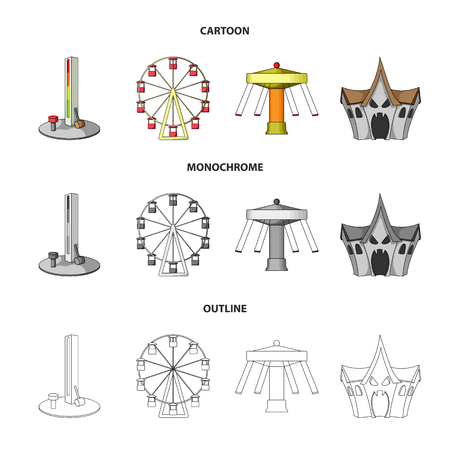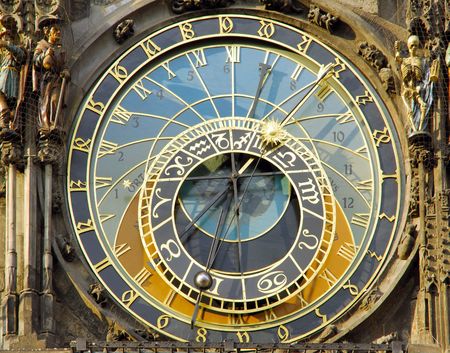Introduction to Horoscope Culture in Britain
In the gentle rhythm of British daily life, horoscopes have found a quiet but enduring presence—nestled between a morning cuppa and the pages of the day’s paper. The fascination with astrology in Britain stretches back centuries, marked by an ever-evolving relationship with fate, scepticism, and the perennial search for meaning amidst drizzle and deadlines. From Elizabethan court astrologers to the humble newspaper columnists of today, Britons have indulged in a uniquely British blend of curiosity—equal parts wit, world-weariness, and hope. Whether discussed at the water cooler or quietly pondered on a crowded train, horoscopes offer both a light-hearted diversion and a reflective mirror for everyday anxieties. This delicate dance between belief and amusement sets the perfect stage for exploring how different corners of the British press—the broadsheets and the tabloids—approach astrology, each reflecting the nation’s nuanced appetite for cosmic guidance.
2. Understanding Broadsheets and Tabloids
When delving into the coverage of horoscopes in Britain, it’s essential to first understand the fundamental differences between broadsheets and tabloids. These two distinct types of newspapers are woven into the fabric of British media, each catering to a unique audience and reflecting contrasting journalistic philosophies.
Audience, Tone, and Tradition
Broadsheets such as The Times, The Guardian, and The Daily Telegraph have long been associated with serious journalism, attracting readers who value in-depth analysis and comprehensive reporting. Their tone is measured, often formal, and appeals to an audience seeking informed perspectives on current affairs. Conversely, tabloids like The Sun, The Mirror, and The Daily Star focus on entertainment, sensational headlines, and stories that resonate with a broader demographic. The writing style is lively, direct, and designed for quick consumption – perfect for a morning read on the Tube or during a lunch break at the local café.
Main Differences Between Broadsheets and Tabloids
| Broadsheets | Tabloids | |
|---|---|---|
| Audience | Professionals, academics, older readers | Younger audiences, mass market appeal |
| Tone | Serious, analytical, restrained | Light-hearted, conversational, sometimes provocative |
| Journalistic Tradition | Investigative reporting, depth, editorial rigour | Entertainment-driven content, human interest stories, brevity |
| Visual Style | Minimal imagery, text-heavy layouts | Bold headlines, colourful images, eye-catching graphics |
| Cultural Perception | “Quality press,” seen as authoritative sources | “Red tops,” known for approachability and populism |
A Reflection of British Media Culture
This divergence in style isn’t just superficial; it reflects deeper traditions within British society about what news is for – whether it should enlighten and challenge (as broadsheets tend to believe), or entertain and engage (the tabloid philosophy). As we move forward in comparing horoscope coverage between these two formats, keep in mind how these foundational differences shape not only what is written but how it is presented to their respective readers.

3. Tone and Language in Horoscope Columns
When delving into the astrological columns of Britains newspapers, one can’t help but notice a striking divergence in tone and language between broadsheets and tabloids. Broadsheets such as The Guardian or The Times approach horoscopes with an air of eloquent understatement. Their astrological advice is often couched in measured, thoughtful phrases—think “You may find yourself at a crossroads today; trust your instincts, as quiet confidence will see you through.” There’s a distinctly British restraint here, favouring subtle suggestions over grand pronouncements. The language is gentle, reflective, and sometimes tinged with poetic melancholy—a nod to the classic British stiff upper lip.
By contrast, tabloids like The Sun or The Mirror take a much cheekier route. Their horoscopes are laced with banter, colloquialisms, and that signature dose of British wit—“Buckle up, Gemini! You’re in for a right old knees-up this weekend,” or “Sagittarius: Don’t let the boss get your goat today—chin up!” The tone is upbeat, sometimes irreverent, and always accessible. This lively style reflects the tabloids’ broader mission to entertain as much as inform, infusing their star signs with a sense of everyday camaraderie and humour that feels unmistakably local.
Both styles reveal something profound about British sensibilities: whether offering stoic encouragement or playful reassurance, these columns tap into a shared national love of understatement and irony. In their own ways, broadsheets and tabloids alike use language not just to predict the stars but to gently guide readers through daily life’s ups and downs—with a wink, a nudge, or a comforting word.
4. Depth and Style of Astrological Interpretation
When comparing the horoscope sections of British broadsheets with those in tabloids, one cannot help but notice a striking difference in both depth and style. Broadsheets, such as The Guardian or The Times, tend to offer horoscopes that are nuanced, reflective, and often laced with subtle wisdom. Their interpretations read like gentle advice from an observant friend—thoughtful, sometimes philosophical, encouraging readers to consider the broader emotional or psychological undercurrents influencing their week. On the other hand, tabloids like The Sun or The Mirror embrace a more dramatic and playful tone. Here, astrology is lively and direct: fortunes are told with bold statements and cheeky flair, making predictions feel immediate and personal. The language sparkles with humour and relatability, ensuring horoscopes are accessible even for the casual reader on the morning commute.
| Broadsheets | Tabloids | |
|---|---|---|
| Tone | Subtle, reflective, sophisticated | Dramatic, playful, colloquial |
| Interpretation Depth | Nuanced; explores emotional & psychological layers | Straightforward; focuses on daily events & luck |
| Language Use | Measured British English; literary references common | Breezy slang; punchy and engaging phrasing |
| Typical Audience Experience | Invites introspection; encourages thoughtful action | Entertains and excites; offers quick guidance |
This contrast reflects not just editorial choices but also an understanding of each publication’s audience. Broadsheet readers may seek a deeper connection between celestial patterns and life’s complexities, while tabloid readers often appreciate astrology as a light-hearted escape—something to smile about over a cuppa. Both approaches hold their own charm within British culture: one whispers ancient wisdom through modern prose; the other delivers cosmic banter with a wink and a nudge.
5. Audience Engagement and Social Impact
When it comes to the readership of horoscope columns in Britain, there is a fascinating divergence between broadsheets and tabloids, each drawing in distinct segments of the population with their unique approaches. Broadsheet readers often tend to be more sceptical and analytical, perhaps viewing horoscopes as a cultural curiosity or a momentary diversion within the broader context of serious news. In contrast, tabloid audiences may seek out horoscopes for comfort, entertainment, or even gentle guidance amid the hustle and bustle of daily life.
The tone of broadsheet horoscopes usually leans towards the reflective and nuanced. Readers here might appreciate a subtle invitation to introspection rather than bold predictions; there’s a sense that the stars are gently nudging rather than directing one’s path. This aligns with British values of understatement and reserve—an almost poetic approach that allows for personal interpretation without imposing certainty.
Tabloid horoscopes, on the other hand, tend to be more direct and accessible. They speak to everyday concerns—romance, luck, work—and do so in a tone that is warm, sometimes cheeky, but always inviting. The language is designed to resonate quickly with readers from all walks of life, reflecting Britain’s lively tradition of public banter and camaraderie. The accessibility of tabloid astrology makes it an easy companion for the morning tea break or the commute home on the Tube.
This difference in tone and content shapes how horoscopes are woven into Britain’s collective rituals. For some, reading their daily star sign is as essential as checking the weather—a small act that brings comfort, continuity, and sometimes even hope. It is this gentle ritual that underscores the social impact of horoscopes: they offer moments of reflection or reassurance in an ever-changing world.
Ultimately, whether found in a broadsheet or a tabloid, horoscopes serve as tiny anchors in British daily life. Their influence may be subtle—perhaps just a knowing smile exchanged over breakfast—but they reveal much about how Britons navigate uncertainty with both wit and wonder.
6. Conclusion: The Stars in the Fabric of British Media
In weaving together the strands of horoscope coverage from broadsheets and tabloids, we find more than just celestial predictions—we glimpse the subtle patterns of British media tastes and identity. Broadsheets, with their restrained tones and analytical reflections, cater to readers who seek a contemplative pause amidst daily headlines—a gentle invitation to reflect on life’s rhythms through the lens of the zodiac. Tabloids, by contrast, embrace a brighter palette: bold language, playful wit, and direct advice that connects with readers seeking both escapism and reassurance in their morning routine.
This divergence reveals much about the enduring desires that course through British culture. Whether nestled in a refined editorial or splashed across a lively page three, horoscopes answer a quietly persistent yearning for cosmic comfort—an ancient longing to feel seen by something greater than ourselves. In a society renowned for its understated humour and subtle emotionality, these daily star signs offer a touch of enchantment, threading hope and reflection into everyday life.
Ultimately, the way British media presents horoscopes is not merely about style or readership; it is a mirror reflecting the nation’s complex relationship with tradition, scepticism, and wonder. The stars continue to shine—sometimes softly, sometimes dazzlingly—across the varied landscape of British journalism, reminding us all that no matter our paper of choice, we share a collective gaze upwards in search of meaning and belonging.


